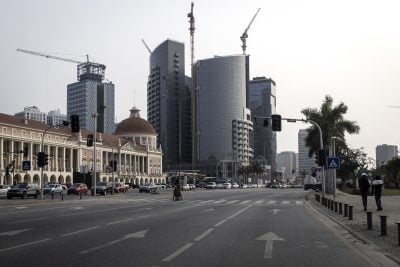Discovering the real story
Ghana had to embark on a very wide-ranging process designed to discover what the real structure of the economy was. Data were collated from the Industrial Survey, the 2005/6 Living Standards Survey, and a 2007 infrastructure survey. That was added to economic data like current VAT receipts, the accounts of the banking sector, and call volumes from the entire Telecom sector.
The result of all this was that a completely updated picture of the economy emerged in the new 2006-based GDP base year, showing how a modern African economy was evolving.
In the 2010 national accounts, agriculture accounted for 30% of the economy, down from over 35% when interpreted according to the old base year. The share of industry also fell, from around 28% under the old base year to just over 18%. The biggest shift of all was in services, which now accounted for over half the economy, whereas under the old base year it would have been around a third. In other words, Ghana was shown not only to have a much bigger economy, but also a more modern one, with services leading the pack.
And the impact of all this? Apart from giving a much clearer picture of what was happening in Ghana, important for policy makers and investors alike, there were also other effects. Overnight Ghana went from being a low-income country to a middle-income country (and incidentally that meant that Ghana was no longer eligible for concessionary World Bank lending).
Also, the debt-to-GDP ratio suddenly dropped, revealing Ghana’s finances to be much healthier than previously thought. At a stroke the risk ratings of fixed-income investment in government debt were cut, making Ghana look like a better investment bet, and more than cancelling out any loss from the move to middle-income status. In a word, Ghana was no longer poor.
Many economists believe that other African countries are similarly richer than the statistics suggest. But as the AfDB has pointed out, reproducing what has been achieved in Ghana is not going to be easy.
Both Liberia and Burundi have tried, but failed to get essential endorsement from the back-room statisticians in the World Bank and the IMF. Tanzania has revised its GDP base, but mistakes were made in collating historical and current statistical tables, leading economists to be sceptical of the result. Nigeria’s rebased GDP was due to be released last year, but is still awaited. Statistics, it turns out, aren’t easy: there is a lot of heavy lifting to be done.
And in the meantime, these exercises have, if anything, increased uncertainty over the real size of African economies. It is widely agreed that the Ghanaian revision was a good thing – the downside is that it is also widely agreed that comparative data on the size of economies and the wealth of Africans cannot be trusted until a standardised statistical practice is adopted across the continent.
That is a long way off: until then, it is anyone’s guess.
Want to continue reading? Subscribe today.
You've read all your free articles for this month! Subscribe now to enjoy full access to our content.
Digital Monthly
£8.00 / month
Receive full unlimited access to our articles, opinions, podcasts and more.
Digital Yearly
£70.00 / year
Our best value offer - save £26 and gain access to all of our digital content for an entire year!

 Sign in with Google
Sign in with Google 




